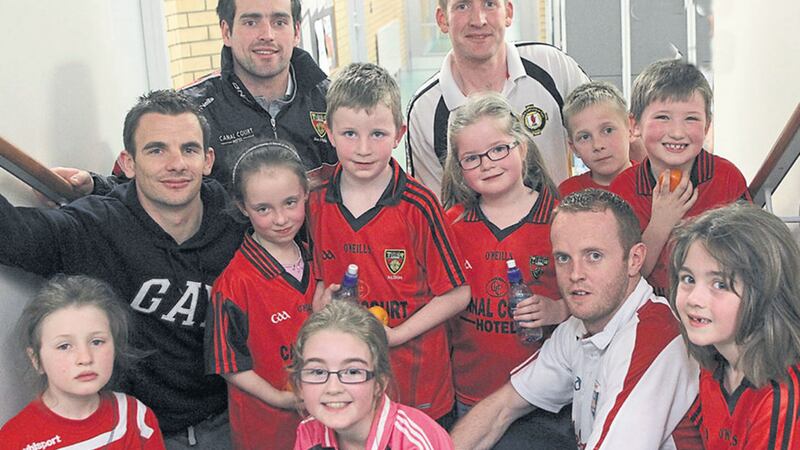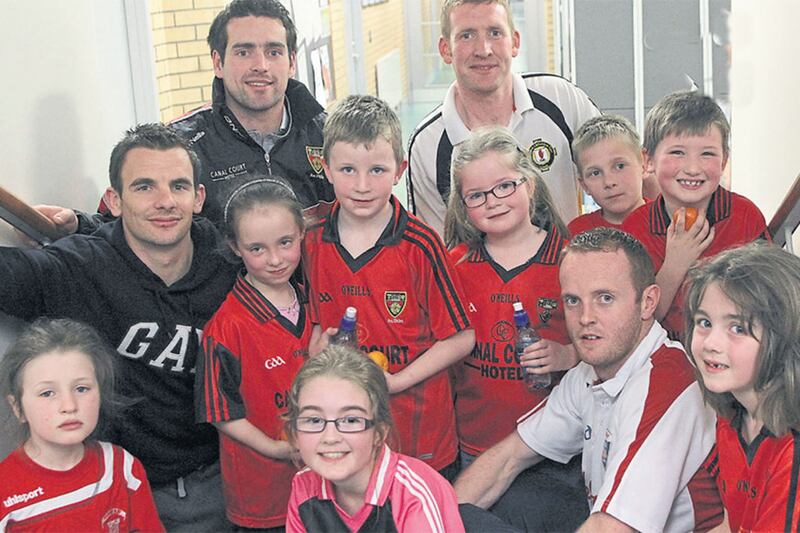IT is a sign of the times. While Slaughtneil and some other marquee teams go on winning county and provincial titles, other club committees are meeting in the depths of winter in a vain attempt to save themselves.
On a weekly basis, I read testimonies of how important club football is to communities and parishes and if the resources were available, the drop-out rate among young people would be much better managed, even eradicated in some cases. Sometimes it is argued that improving the standard of club football is the solution to many problems in the GAA.
The promotion of games at inter-county level is unbalanced, while its poor relation – club football – is on life support. And don’t get me wrong, there is merit in these arguments. To quote legendary Liverpool manager Bill Shankly: ‘The socialism I believe in is everyone working for each other, everyone having a share of the rewards. It’s the way I see football, it’s the way I see life’.
Alex Ferguson was no different. Both men’s working class background was the cornerstone for this type of socialist thinking. The coal pits and the dockyards which giant figures like Shankly and Ferguson emerged from are now gone and, to a certain extent, so too has socialism. As Ireland has become wealthier as a nation, we have become much more selfish. We chase the dollar. We live to work. We don’t work to live.
Our preoccupation with buying the bigger house, the nicer car and the best clothes has resulted in society fracturing to such an extent that even the gulf between the middle classes and poorest in society is as vast as the one between the richest and the middle classes in society.
Last week, Newry Mitchel’s held an EGM, advertised in The Irish News, in an effort to save their club from extinction. With no teams being fielded at underage level and a senior team struggling to get 15 players onto the field in division four of the Down league, this is a far cry from the era when the Mitchel’s won four Down senior championships in the 1960s with All-Irelandwinning Down players such as Sean O’Neill and Val Kane in their ranks.
With a population of under 30,000, Newry is a small city and a big town. There are three teams in the city; Newry Mitchel’s, Newry Shamrocks and St John Bosco. Bosco operate in Division Three and the Shamrocks in Division Two. Newry Mitchel’s and Newry Shamrocks are separated by about 500 metres, with Newry Shamrocks’ home being Pairc Esler, more familiar as the home patch of Down’s county teams.
Newry Mitchel’s have no permanent clubrooms and operate in the middle of an industrial estate. The absence of chimney pots around the ground does the club no favours and it certainly doesn’t help their cause when seeking to recruit younger members.
The traditional communities, which previously provided players to all the Newry clubs, have undergone a lot of social changes. The middle classes, for want of a better term, have moved to the outskirts of the town and they are sending their children to more semi-rural based clubs, such as Ballyholland and Saval. The large towns and cities are increasingly finding themselves inhabited by non-nationals with little background in GAA.
I know my own club Saval have benefited from two first class Newry Mitchel’s players who made the difficult decision to seek higher standards of football. It was a difficult decision to accept for all parties, but the simple prospect of playing for a club that may or may not exist in the short-term was too great a risk to take for young men who had aspirations to play at inter-county level. I feel that the difficulties experienced in Newry could also be relevant to places such as Enniskillen, Dungannon, Derry City and Belfast.
It was almost a given that Enniskillen Gaels, home of the Brewster family, could be placed in the Ulster club draw long before the county championship had even started in the county. Not any more. Other sports have had an impact.
However, I think that, in many cases, this impact has been misjudged and it can sometimes be the most convenient place to start when seeking answers. There have been many successful urban and town clubs who have had dual players and managed this successfully.
Politics have also changed the fortunes for many clubs. My mother hailed from the great Carrickcruppen club in south Armagh. Again, they are close enough to Newry, yet far enough away to be uniquely set. Historically, they were a real powerhouse in the 1970s and 1980s and appeared in five championship finals in those A new club was formed in Camlough – Shane O’Neill’s – in 1984 after a disagreement among locals over political issues.
Carrickcruppen would eventually dominate no longer and, coincidentally or not, there would be no more championship finals to look forward to for the local Camlough community. The Shane O’Neill’s club also struggle today and both clubs find themselves currently between the second and third divisions of the Armagh leagues.
There are hard-working members within both clubs, but such struggles are not always being endured by other people unwilling to make sacrifices to play for their respective clubs. Success is what drives much participation. Similarly, the lack of it has the opposite effect.
--
AMALGAMATION is the dreaded word in the GAA. It is currently rife at underage level, in part due to emigration and dwindling numbers within communities that makes fielding club teams unsustainable.
Carryduff recently won the Down U21 championship with an amalgamated team of Bredagh and Carryduff players. Some of these players experienced winning for the first time. Does it matter that the players they are lining out with in the same team might live one mile away from them, an imaginary boundary separated by nothing more than a stream at times?
What matters most is that the standards are high and players are retained in the ‘system’ through success. How successful can we be in retaining some of our younger players if we cannot field teams? Amalgamating entire clubs and committees is almost unheard of, if ever possible. Perhaps elsewhere, I would love to know if this has been successful and, if so, have numbers been boosted?
What doesn’t really make sense is smaller communities such as Kilcoo, Crossmaglen and Slaughtneil dominating county championships, yet urban, town and city clubs with 20 times as many players to pick from struggling in lower divisions.
I know that the issues being felt by clubs are much more complicated than simply blaming other sports. It is a societal change, communities being lost within towns and cities, an exodus of families to more urban areas and, in many case, too many clubs picking from the same pool.
There will never be much love for those who dare initiate the conversation. But to save a few, sacrifices have to be made and it is only when these sacrifices are rewarded through success, will that person or people be celebrated. It is a difficult concept to get your head around. Society has changed and, as an association, the GAA must change too.


